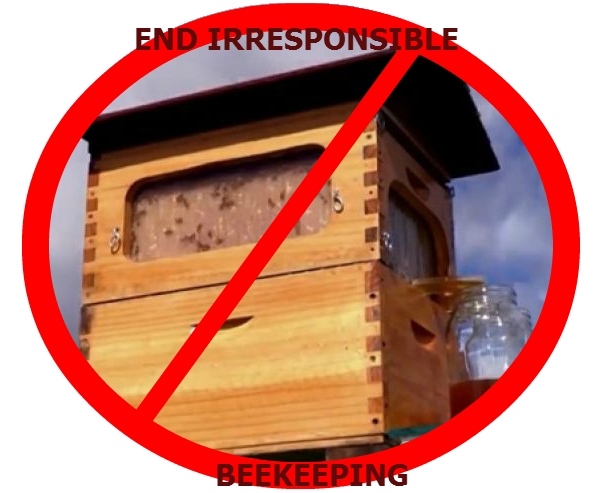REGARDING THE “FLOW HIVE”
Now, I’m sorry this is different content than what is normal, but this desperately has to be said and it has to be spread.
- The Flow Hive advertises being a more hands-off approach than regular beekeeping, but in the long run, that may very well not be the case. The plastic frames that make the hive, well, flow, are not only unnatural (no good beekeeper wants plastic in their hive), but also aren’t the natural size that a bee’s combs should be. Bees aren’t going to willingly and happily build in plastic, and it also poses problems like mould, dirtiness, and so on. Not once do they even say you should wash the frames, which is also rather off-putting, especially when that is put alongside the Flow Hive’s constant skimming over the need for hive maintenance. Bees can do most of it, yeah, but when plastic is put in the equation, one shouldn’t entirely trust that the bees will properly clean it, and they can’t defend themselves properly against many of the problems posed by an non-natural hive.
- No smoker, no maintenance. Let’s elaborate on that, shall we? Common hive problems are Varroa mites, robbing, wasps and hornets, moths, mice, and more. With a hive that, even in its first bullet, states that smokers “used to be” used in keeping and that “now you don’t need to do any of that.” Though it does state later (about twice) that smokers should still be used, the misinformation in the beginning is already enough to lead to irresponsibility. More on that, later, though.
- Queen Excluder, no honey. No Excluder, quite some mites. A common issue in all sorts of hives is making sure there’s no brood in the supers, or honey boxes. One of the ways to deal with that is by using a queen excluder, which is basically a screen that lets bees go through, but keeps the queen from doing the same. Though a queen excluder is offered in some of these packages, it isn’t used in all of them. The problem here is that if you press the tap and brood is in the cells, you’ll get some… nasty honey. More important than that, though, is that you’ll be helping out a pest you don’t want at all– the Varroa mite. Varroa mites take advantage of the larger cells that drones need and reproduce that way. With cells as big as the Flow’s cells, you can cause an all-out epidemic just by getting rid of the Excluder. The risk of keeping the excluder in, though, is that many bees won’t go past it, and so you have a risk of not getting honey at all in those specially-designed frames.
- You can’t monitor how much honey you take. How much is too much? What if they need some of what you’re taking? You can’t really tell how much honey is in the brood box and how many total bees there are when all you have to do is turn a handle and get your prize. That alone causes super huge risks, especially in places with non-moderate winters.
- It’s unnatural. The general problem with Langstroth hives as a whole is that Bees don’t naturally build upwards. They build going down, but are often forced to go up in designs such as these.
- It encourages irresponsibility. Let’s face it– most people who want this hive want it because honey collection becomes “easy” with it, not because it’s better for the bees. What will likely happen is that the Flow Hive will turn into a cruelty machine extraordinaire, with people overcollecting honey and neglecting their hive.
In short, the Flow Hive is overpriced, unfair, and honey-centric rather than bee-centric, so if you want to start beekeeping, this isn’t the way to go. Not at all.
